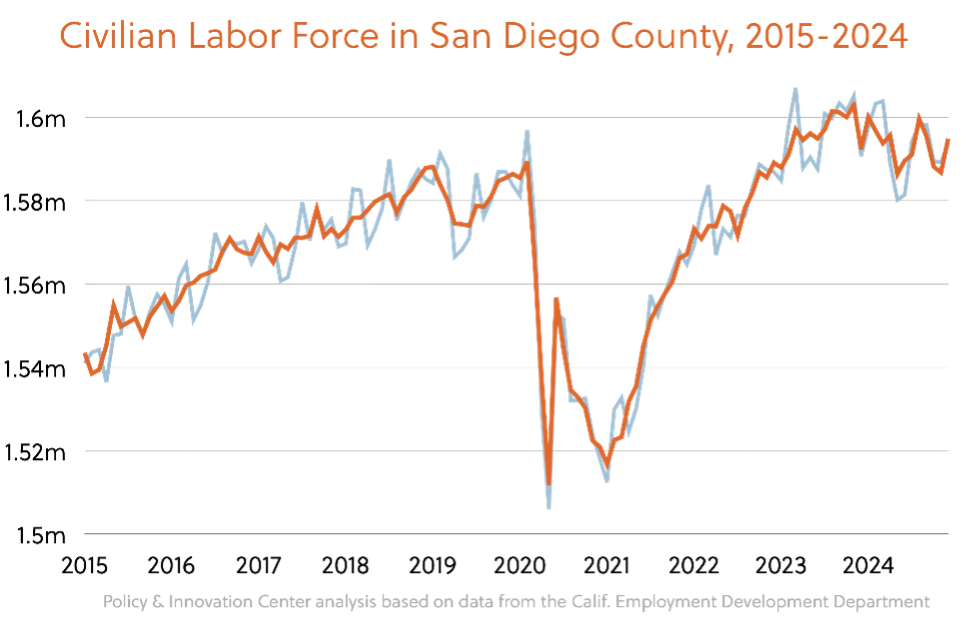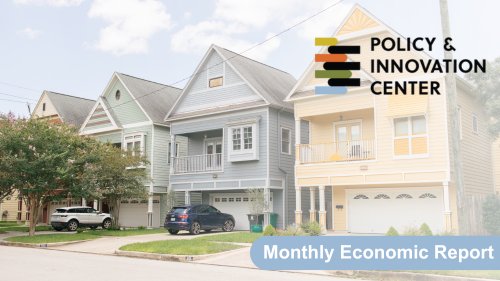Steady Employment Counters San Diegans’ Reality

Policy & Innovation Center Chief Economist Analyzes Today’s Data and Looming Challenges
SAN DIEGO (Jan. 29, 2025) – For the first time in a decade, San Diego unemployment rate hasn’t changed in five consecutive months, according to regional data released today by the California Employment Development Department. The latest labor market data has been analyzed by San Diego Regional Policy & Innovation Center (PIC) Chief Economist, Daniel Enemark, PhD., who adjusted the raw data to account for seasonal trends.
This record-setting lack of change is remarkable as it shows that not a single sector added or lost 1,000 jobs between November and December 2024. December’s unemployment rate sat at a shockingly stable 4.6%.
“With the unemployment rate historically stable – and quite close to full employment – why do so many of us feel so negatively about the economy?” said Dr. Enemark. “The answer is there are plenty of jobs, but not enough jobs that provide financial self-sufficiency.”
A report commissioned by the San Diego Foundation, PIC found that over a third of San Diegans live in households not earning enough to cover the costs of a lower standard of living without government assistance. That rate is twice as high for Latinos.
Today the median home price in San Diego County is $935,000. With a 30-year fixed mortgage at current rates plus property taxes, that house will cost around $5,900 a month, unaffordable for any household earning less than $253,000 a year, which is most households. The Department of Commerce defines a middle-class household as one that can afford the following:
- Adequate health insurance
- Retirement savings
- One or two cars
- Home ownership
- One family vacation per year
“If that lifestyle is inaccessible to the vast majority of San Diego households that earn less than $253,000 annually, it’s no wonder folks feel like the economy isn’t working for them,” said Enemark.
PIC, a powerhouse organization dedicated to tackling the region’s biggest challenges through equity-centered research, policy analysis, and collaborative action, uses this workforce data to inform its work and create accessible economic information to the community.
